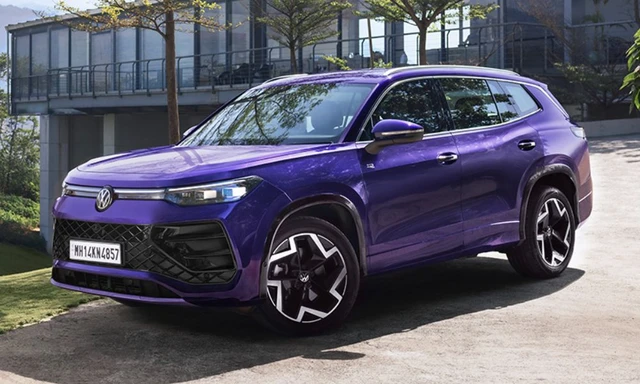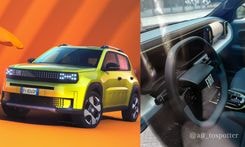What is an Intercooler? What Are Its Different Types?

The intercooler, like an air conditioning unit, heats up as pressurized air passes through, thereby cooling down the air before it enters the engine. This lower temperature air has greater density and thus allows for more oxygen molecules to be packed into a given volume, resulting in more power from each combustion cycle
What is an Intercooler?
An intercooler is a component that is used in most Automobiles(cars, trucks, and even buses). It is used to cool the air coming out of the engine before it enters into the intake manifold. It works by taking hot air out of the engine and cooling it down.
This reduces the temperature of the air so it can be put back into the engine without causing damage to any parts inside. This allows for increased efficiency because less energy is wasted on heat transfer.
There are several different types available but most people choose between two different types: air-to-air or water/liquid cooled versions depending on what kind of vehicle they want to install one on (this will be explained below).
1. Air-to-Air (or Cold Air) Intercooler
This type of intercooler uses ambient air as its cooling medium. The intake manifold draws in the coldest air available, which means that this type of system requires large volumes of air to function properly. This is why you often see them mounted in front of grilles or on top of hoods (on multiple vehicles). They're also often found on drag race cars because they have no restrictions on airflow like other systems do.
These types require more space than other types and they require ducting or piping to connect to the intake manifold or throttle body (depending on your vehicle).
Air-to-air intercoolers are typically less expensive than air-to-Liquid units, but they require more maintenance due to dust buildup around the fins that can block airflow. It is most commonly used in turbochargers, although it can also be used in superchargers or other compressors.

Photo Credit: pixabay.com
2. Air-to-Liquid/Water Intercooler
Air-to-liquid intercoolers are similar to air-to-air intercoolers in many ways. Both types of intercoolers use heat exchange to remove heat from incoming air and cool it down before it enters the engine.
However, unlike air-to-air intercoolers, which rely on ambient air for cooling and only need a fan to move this air around, air-to-liquid systems require pumps and other mechanical parts to circulate water through them.
Air-to-liquid intercoolers are made up of a series of tubes filled with coolant that run through the engine's radiator. The tubes are connected to a tank that fills with water and stores coolant when the car is running, then releases it into the tubes when needed.
The water absorbs heat from the air passing through the tubes and transfers it to itself. This coolant is then pumped back into the tank until it needs to be used again. Air-to-water intercoolers have no moving parts, so they're easy to maintain—but they're also more expensive than their air-to-air counterparts.
In addition to this, there is also a third intercooler type called “Liquid-to-liquid” intercoolers, which are not widely used because of their limitations.
A liquid-to-liquid intercooler is a type of intercooler that uses liquid to cool the air that passes through it. The liquid inside the intercooler is pumped through tubes and then sprayed into a chamber where it evaporates, taking heat with it. The resulting cooler air is then pumped back into the car's engine.
There are two main disadvantages of using a liquid-to-liquid intercooler:
1) They are more expensive than other types of intercoolers because they use specialized tubing and hoses made from exotic materials like aluminum or stainless steel.
2) They're harder to install than other types of intercoolers because they require additional parts like coolant pumps and pressure regulators.
Latest News
 Jaiveer Mehra | Jan 15, 2026Kia Carens Clavis Gets New Sunroof-Equipped HTE(EX) Trim; Prices Start From Rs 12.55 LakhNew lower mid-spec trim is positioned between the HTE(O) and HTK variants and gets some additional features.1 min read
Jaiveer Mehra | Jan 15, 2026Kia Carens Clavis Gets New Sunroof-Equipped HTE(EX) Trim; Prices Start From Rs 12.55 LakhNew lower mid-spec trim is positioned between the HTE(O) and HTK variants and gets some additional features.1 min read Seshan Vijayraghvan | Jan 15, 2026All Electric BMW M3 Details Out; Will Offer Simulated Gear Shifts, Synthetic SoundsThe first EV from the high-performance division of BMW will get individual electric motors of all 4 wheels1 min read
Seshan Vijayraghvan | Jan 15, 2026All Electric BMW M3 Details Out; Will Offer Simulated Gear Shifts, Synthetic SoundsThe first EV from the high-performance division of BMW will get individual electric motors of all 4 wheels1 min read Jaiveer Mehra | Jan 15, 2026Volvo EX60 SUV Global Debut On Jan 21; Will Offer 810 km RangeNew GLC EV rival will be the first Volvo to use the next-gen SPA3 platform and support 400 kW fast charging.1 min read
Jaiveer Mehra | Jan 15, 2026Volvo EX60 SUV Global Debut On Jan 21; Will Offer 810 km RangeNew GLC EV rival will be the first Volvo to use the next-gen SPA3 platform and support 400 kW fast charging.1 min read Jaiveer Mehra | Jan 15, 2026India-Spec Volkswagen Tayron RevealedThree-row SUV will be offered in the R-Line trim with features like 19-inch wheels, a 15-inch touchscreen, front seats with ventilation & massage function and more.1 min read
Jaiveer Mehra | Jan 15, 2026India-Spec Volkswagen Tayron RevealedThree-row SUV will be offered in the R-Line trim with features like 19-inch wheels, a 15-inch touchscreen, front seats with ventilation & massage function and more.1 min read car&bike Team | Jan 15, 2026Mercedes-Benz EQS SUV Gets A Celebration Edition For 2026, Prices start at Rs. 1.34 CroreThe new celebration edition will be available with both the EQS 450 and the EQS 580 versions of the SUV.1 min read
car&bike Team | Jan 15, 2026Mercedes-Benz EQS SUV Gets A Celebration Edition For 2026, Prices start at Rs. 1.34 CroreThe new celebration edition will be available with both the EQS 450 and the EQS 580 versions of the SUV.1 min read Jaiveer Mehra | Jan 15, 2026Auto Sales: Mercedes-Benz Sales Decline 3 Per Cent; 19,007 Units Sold In CY2025The German carmaker reported year-on-year growth in sales for its Top-End Vehicles (TEVs), EV range, and AMG models, although sales in entry-level segments were down 20 per cent.3 mins read
Jaiveer Mehra | Jan 15, 2026Auto Sales: Mercedes-Benz Sales Decline 3 Per Cent; 19,007 Units Sold In CY2025The German carmaker reported year-on-year growth in sales for its Top-End Vehicles (TEVs), EV range, and AMG models, although sales in entry-level segments were down 20 per cent.3 mins read
 Bilal Firfiray | Jan 9, 2026Toyota Urban Cruiser Hyryder: 10,000 km Long-Term ReviewAfter spending over three months and 10,000 km with the Toyota Urban Cruiser Hyryder Hybrid, we were impressed by its real-world mileage, seamless hybrid, practical comfort, and Toyota reliability. Is it the best C-SUV then?5 mins read
Bilal Firfiray | Jan 9, 2026Toyota Urban Cruiser Hyryder: 10,000 km Long-Term ReviewAfter spending over three months and 10,000 km with the Toyota Urban Cruiser Hyryder Hybrid, we were impressed by its real-world mileage, seamless hybrid, practical comfort, and Toyota reliability. Is it the best C-SUV then?5 mins read Seshan Vijayraghvan | Jan 8, 20262026 Mahindra XUV 7XO Review: Big On Tech, Bigger On ComfortThe new Mahindra XUV 7XO is flashier, feature packed, and comes with more advanced tech. But are the changes just incremental or actually substantial?1 min read
Seshan Vijayraghvan | Jan 8, 20262026 Mahindra XUV 7XO Review: Big On Tech, Bigger On ComfortThe new Mahindra XUV 7XO is flashier, feature packed, and comes with more advanced tech. But are the changes just incremental or actually substantial?1 min read Preetam Bora | Jan 10, 2026Simple One Gen 2 First Ride Review: 265 km Claimed Range!The Gen 2 model of Simple Energy’s first electric scooter gets a fair few updates, including new features, tech, more range and lighter weight. We spent a couple of hours with the Simple One Gen 2 to find out if it manages to impress.6 mins read
Preetam Bora | Jan 10, 2026Simple One Gen 2 First Ride Review: 265 km Claimed Range!The Gen 2 model of Simple Energy’s first electric scooter gets a fair few updates, including new features, tech, more range and lighter weight. We spent a couple of hours with the Simple One Gen 2 to find out if it manages to impress.6 mins read Amaan Ahmed | Jan 3, 2026VLF Mobster 135 300 KM Review: Fun But FlawedA 125 cc scooter with Italian design and Chinese genes is a rare combination, and while some may be tempted to dismiss it because of its origins, the VLF Mobster shows 125s can also be exciting – but not without compromises.11 mins read
Amaan Ahmed | Jan 3, 2026VLF Mobster 135 300 KM Review: Fun But FlawedA 125 cc scooter with Italian design and Chinese genes is a rare combination, and while some may be tempted to dismiss it because of its origins, the VLF Mobster shows 125s can also be exciting – but not without compromises.11 mins read Preetam Bora | Dec 30, 2025TVS Orbiter Review: Real-World Performance and Range TestedThe TVS Orbiter is a promising electric scooter promising decent range, practicality and pricing. But is there any reason to avoid it? We spent a few days getting to know it better.9 mins read
Preetam Bora | Dec 30, 2025TVS Orbiter Review: Real-World Performance and Range TestedThe TVS Orbiter is a promising electric scooter promising decent range, practicality and pricing. But is there any reason to avoid it? We spent a few days getting to know it better.9 mins read




















































































































